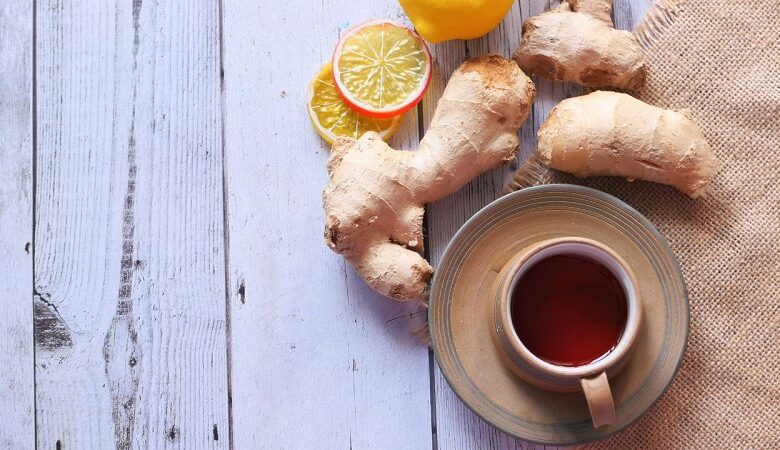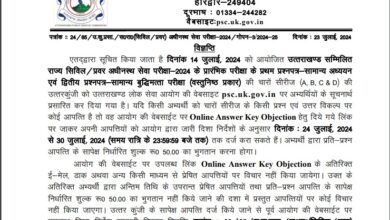
न्यूज लाइव ब्लॉग
सर्दियों की सुबह में अदरक वाली चाय की बात ही कुछ और है। अदरक चाय से लेकर आपके भोजन को स्वादिष्ट और सेहतमंद बनाती है। अदरक कहां से आई और यह कितनी पुरानी है, इसके बारे में जानते हैं।
माना जाता है कि अदरक की उत्पत्ति भारतीय उपमहाद्वीप से लेकर चीन सहित दक्षिणी एशिया तक फैले क्षेत्र में हुई है। यह सबसे पुराने ज्ञात मसालों में से एक है, जिसका इतिहास 5,000 साल से अधिक पुराना है।
प्राचीन भारतीय और चीनी संस्कृतियाँ अदरक के औषधीय गुणों को पहचानने वाले पहले लोगों में से थीं। इसका उपयोग पाचन संबंधी समस्याओं, मतली और सूजन की स्थितियों सहित विभिन्न बीमारियों के इलाज के लिए किया जाता था। अदरक धीरे-धीरे पारंपरिक चिकित्सा प्रणालियों में प्रमुख बन गया।
अदरक ने एशिया, मध्य पूर्व और यूरोप को जोड़ने वाले मसाला व्यापार में महत्वपूर्ण भूमिका निभाई। इसके अनूठे स्वाद और औषधीय गुणों के कारण इसे अत्यधिक महत्व दिया गया। रोमन साम्राज्य के दौरान, अदरक एक लोकप्रिय और महंगा मसाला था।
व्यापार मार्गों के विस्तार के साथ, अदरक ने मध्ययुगीन काल में यूरोप तक अपना रास्ता बना लिया। यह पुनर्जागरण के दौरान विशेष रूप से लोकप्रिय हो गया और इसका उपयोग पाक और औषधीय दोनों तैयारियों में किया गया।
मध्ययुगीन यूरोप में, अदरक का उपयोग जिंजरब्रेड सहित विभिन्न प्रकार के खाद्य पदार्थों को स्वादिष्ट बनाने के लिए किया जाता था। जिंजरब्रेड की लोकप्रियता फैल गई और यह छुट्टियों और उत्सवों से जुड़ गया। 18वीं शताब्दी में, अदरक का उपयोग जिंजर एले नामक कार्बोनेटेड पेय को स्वादिष्ट बनाने के लिए किया जाता था।
अदरक को स्पेनिश और पुर्तगाली खोजकर्ता अमेरिका ले गए। इसने औपनिवेशिक अमेरिका में लोकप्रियता हासिल की और मिठाइयों से लेकर स्वादिष्ट व्यंजनों तक विभिन्न पाक कृतियों में इसका उपयोग किया गया।
आज, अदरक दुनियाभर के व्यंजनों में प्रमुख है। इसका उपयोग ताजा, सुखाकर और पीसकर किया जाता है, जिससे व्यंजनों में एक विशिष्ट, गर्म और थोड़ा मसालेदार स्वाद जुड़ जाता है। अदरक एशियाई व्यंजनों में एक प्रमुख घटक है, और इसका उपयोग कई पश्चिमी मिठाइयों और पेय पदार्थों में भी किया जाता है।
अदरक को इसके संभावित स्वास्थ्य लाभों के लिए महत्व दिया जाना जारी है। यह अपने सूजनरोधी और मतलीरोधी गुणों के लिए जाना जाता है। अदरक की चाय, अदरक की खुराक और अदरक से बने उत्पाद उन लोगों के लिए लोकप्रिय विकल्प हैं जो इसके संभावित स्वास्थ्य लाभ चाहते हैं।
विभिन्न संस्कृतियों में अदरक का प्रतीकात्मक महत्व है। कुछ परंपराओं में, इसे सौभाग्य और समृद्धि से जोड़ा जाता है। दूसरों में, इसका उपयोग अनुष्ठानों और समारोहों में किया जाता है।
कुल मिलाकर, अदरक की कहानी व्यापार, अन्वेषण, खानपान में नवाचार और पारंपरिक चिकित्सा के इतिहास के माध्यम से बुनी गई एक समृद्ध टेपेस्ट्री है, जो इसे कई समाजों के सांस्कृतिक और ऐतिहासिक ताने-बाने में गहराई से शामिल मसाला बनाती है।
The Morning of Winters: The Tale of Ginger in Tea
Talking about ginger tea in the mornings is something more. From ginger tea to making your meals delicious and healthy, ginger plays a crucial role. Let’s find out where ginger comes from and how ancient it is.
It is believed that ginger originated from the Indian subcontinent to Southern Asia, including China. It is one of the oldest known spices with a history of more than 5,000 years.
Ancient Indian and Chinese cultures were among the first to identify the medicinal properties of ginger. Its use was for treating various ailments, including digestive issues, nausea, and inflammatory conditions. Ginger gradually became a major player in traditional medical systems.
Ginger has played a significant role in the spice trade, connecting Asia, the Middle East, and Europe. Due to its unique flavor and medicinal properties, ginger found its way to various regions, including Europe.
Ancient Indian and Chinese cultures were among the first to identify the medicinal properties of ginger. Its use was for treating various ailments, including digestive issues, nausea, and inflammatory conditions. Ginger gradually became a major player in traditional medical systems.
Ginger connected Asia, the Middle East, and Europe in the spice trade. Due to its unique flavor and medicinal properties, ginger found its way to various regions, including Europe. During the Roman Empire, ginger was a popular and expensive spice.
With the expansion of trade routes, ginger made its way to Europe during the medieval period. It became particularly popular during the Renaissance and was used in both culinary and medicinal preparations.
Ginger played a significant role in the spice trade, connecting Asia, the Middle East, and Europe. Due to its unique flavor and medicinal properties, ginger found its way to various regions, including Europe.
With the expansion of trade routes, ginger made its way to Europe during the medieval period. It became particularly popular during the Renaissance and was used in both culinary and medicinal preparations.
Ginger played a crucial role in the spice trade that connected Asia, the Middle East, and Europe. During the Roman Empire, ginger was a popular and expensive spice.
With the expansion of trade routes, ginger found its way to Europe during the medieval period. It became particularly popular during the Renaissance and was used in both culinary and medicinal preparations.
In medieval Europe, ginger’s use was to spice up various foods, including gingerbread. The popularity of gingerbread spread, becoming associated with holidays and festivities. In the 18th century, ginger was used to flavor a carbonated beverage known as ginger ale.
Gingerbread became associated with holidays and festivities. In the 18th century, ginger was used to flavor a carbonated beverage known as ginger ale.
Ginger was brought to the Americas by Spanish and Portuguese explorers. It gained popularity in colonial America and was used in various culinary creations, from sweets to savory dishes.
Today, ginger is a staple in cuisines around the world. It is used fresh, dried, and ground, adding a distinctive, warm, and slightly spicy flavor to dishes. Ginger is a key ingredient in Asian cuisine, and it’s also used in many Western desserts and beverages.
Today, ginger is cultivated in various parts of the world with suitable climates, including India, China, Nigeria, Indonesia, and other tropical regions. It is used globally in culinary applications, traditional medicine, and as a popular spice in a variety of dishes and beverages.
The versatile and aromatic qualities of ginger have contributed to its widespread use and continued importance in various cultures throughout history.
















